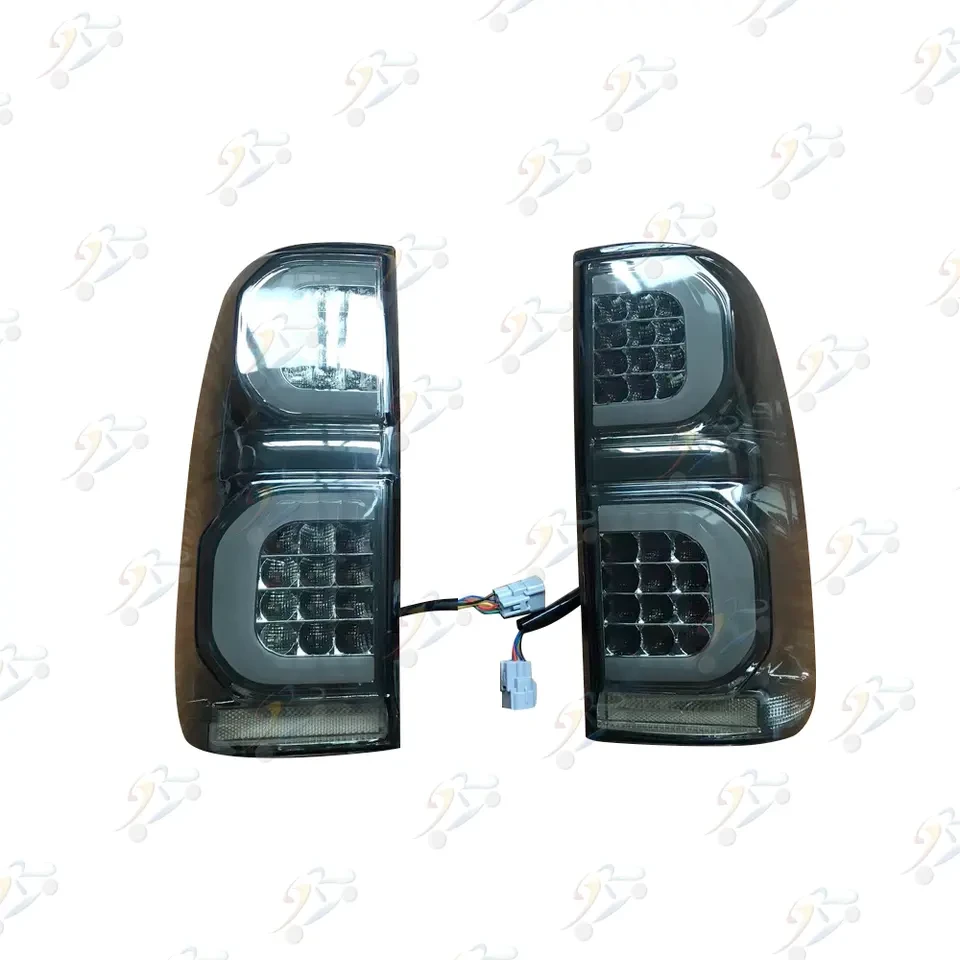

Tail lights are not just essential for signaling your intentions on the road but also play a crucial role in ensuring your safety and compliance with traffic laws. However, like any other vehicle component, Land Cruiser tail lights can experience issues over time. In this guide, we will explore common problems such as bulb failure, wiring issues, and condensation buildup inside tail lights. We'll provide step-by-step troubleshooting methods and maintenance tips to help you keep your Land Cruiser's tail lights in optimal condition.
Bulb Failure
One of the most common issues with Land Cruiser tail lights is bulb failure. Symptoms typically include dim or non-functional tail lights, which can be a safety hazard, especially in low visibility conditions.
To replace a tail light bulb on your Land Cruiser:
1. Identify the Bulb Type: Consult your owner's manual to determine the correct replacement bulb type for your specific Land Cruiser model.
2. Access the Tail Light Assembly: Depending on your Land Cruiser model, you may need to access the bulb from inside the trunk or by removing the tail light assembly from the exterior.
3. Replace the Bulb: Carefully remove the old bulb by twisting it counterclockwise, then insert the new bulb and secure it by twisting clockwise.
4. Test the Tail Lights: Turn on your vehicle's headlights and check the functionality of the replaced bulb.
When purchasing replacement bulbs, consider options available from suppliers in China, which often offer a wide range of automotive bulbs suitable for Land Cruisers at competitive prices.
Wiring Issues
Wiring issues can manifest as flickering tail lights, intermittent function, or complete failure. These problems are often caused by damaged or corroded wiring connections.
To troubleshoot wiring issues with your Land Cruiser tail lights:
1. Inspect Wiring Connections: Visually inspect the wiring harness and connectors for signs of damage, corrosion, or loose connections.
2. Use a Multimeter: Test the continuity of the wiring using a multimeter. This tool helps identify any breaks or shorts in the circuit.
3. Repair or Replace Damaged Wiring: Depending on the severity of the issue, repair damaged wiring connections using electrical tape, soldering, or replace the wiring harness entirely if necessary.
For replacement wiring harnesses or repair materials, consider sourcing from reputable suppliers in China, known for offering quality automotive electrical components.
Condensation Inside Tail Lights
Condensation inside tail lights is another common issue, especially in regions with varying temperatures or high humidity. It can lead to reduced visibility and potential damage to electrical components.
To address condensation buildup inside your Land Cruiser tail lights:
1. Identify the Source of Condensation: Determine where the moisture is entering the tail light assembly. This may involve inspecting seals, lenses, or housing seams.
2. Remove the Moisture: Use methods such as silica gel packets, drying agents, or placing the tail light assembly in a warm, dry environment to remove existing moisture.
3. Prevent Future Condensation: Apply silicone sealant or replace damaged seals to prevent moisture ingress. Ensure all components are securely sealed after maintenance.
Products for sealing and moisture prevention are available from various suppliers in China, offering effective solutions tailored for automotive applications.

Step-by-Step Guide for Basic Troubleshooting
For initial troubleshooting of Land Cruiser tail light issues:
1. Check Fuses: Inspect the vehicle's fuse box to identify and replace any blown fuses related to the tail lights.
2. Battery Voltage: Verify the battery voltage to ensure sufficient power supply to the tail lights.
3. Visual Inspection: Conduct a visual inspection of the tail light assembly for physical damage, loose connections, or signs of moisture.
Advanced Troubleshooting for Persistent Issues
For persistent or complex issues with Land Cruiser tail lights:
1. Diagnose Wiring Diagrams: Refer to wiring diagrams specific to your Land Cruiser model to diagnose intricate wiring problems accurately.
2. Moisture Ingress Points: Identify potential points of moisture ingress and apply appropriate sealing methods or replacement parts to prevent further issues.
Regular Inspection and Cleaning
To maintain optimal performance of your Land Cruiser tail lights:
1. Frequency: Perform visual inspections of tail lights every few months, especially before long trips or during seasonal changes.
2. Cleaning Procedures: Clean lenses and seals using a mild detergent and water solution. Avoid using abrasive materials that could scratch the lens surface.
Upgrading to LED Tail Lights
Consider upgrading to LED tail lights for your Land Cruiser:
1. Benefits: LED lights offer benefits such as increased energy efficiency, longer lifespan, and enhanced brightness for improved visibility.
2. Installation: Retrofitting LED tail lights can be straightforward, with kits and conversion options available from suppliers in China specializing in automotive lighting solutions.
In conclusion, troubleshooting common issues with Land Cruiser tail lights requires a systematic approach involving diagnostics, maintenance, and possibly upgrades to ensure optimal functionality and safety on the road. By following the outlined steps and utilizing products from reliable suppliers in China, you can effectively address and prevent tail light problems, ensuring your Land Cruiser remains roadworthy and compliant with safety regulations.
For more tips or to share your own experiences with Land Cruiser tail light maintenance, feel free to leave a comment below. Your feedback and insights are valuable to our community of automotive enthusiasts.
Email format error
Email cannot be empty
Email already exists
6-20 characters(letters plus numbers only)
The password is inconsistent
Email format error
Email cannot be empty
Email does not exist
6-20 characters(letters plus numbers only)
The password is inconsistent